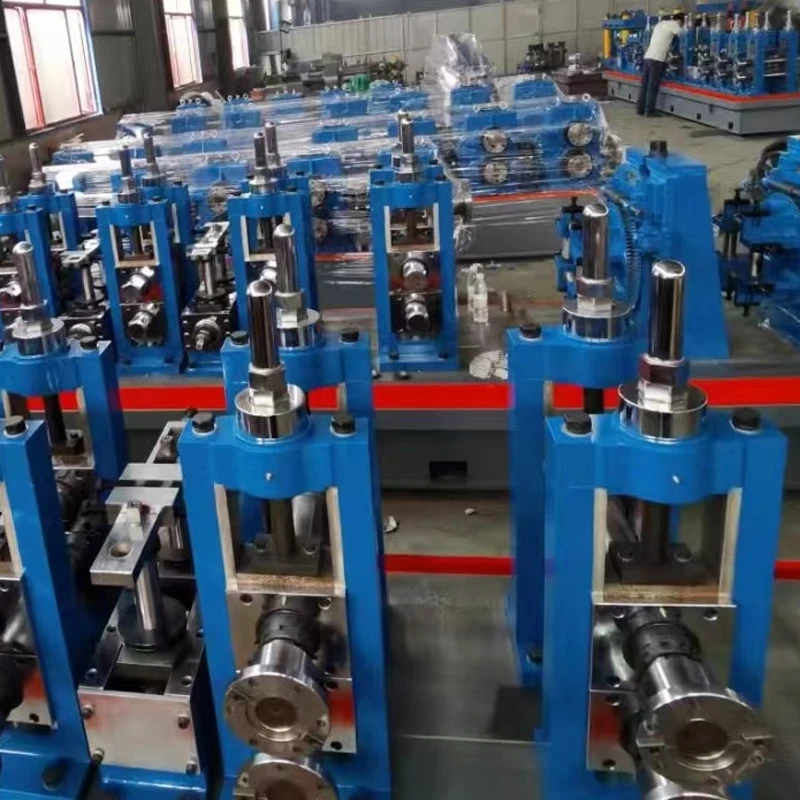Design Principles for High-Speed Shear Applications in Advanced Manufacturing Processes
Understanding Flying Shear Design Principles and Applications
Flying shear design is an essential concept in various engineering fields, particularly in manufacturing and material processing industries. It refers to the techniques and systems utilized to cut materials while they are in motion. This advanced methodology is crucial for optimizing production efficiency, improving precision, and minimizing waste in processes involving continuous materials such as roll-formed metal or plastic films.
Principles of Flying Shear Design
The primary principle underlying flying shear design is the synchronization of cutting mechanisms with the movement of the material being processed. In conventional cutting methods, materials are often stopped to make precise cuts, which can lead to inefficiencies and increased production time. However, flying shear systems are engineered to cut materials at high speeds while they are still in motion, allowing for continuous production processes.
Several key components are integral to the effective functioning of flying shear systems
1. Synchronization Accurate synchronization of the cutting blade with the speed of the material is crucial. Any delay or misalignment can result in inaccurate cuts and a loss of material integrity.
2. Blade Design The design of the shear blade must accommodate high-speed operations. Materials used for the blades often include high-speed steel or carbide to withstand wear and maintain sharpness over time.
3. Control Systems Advanced control systems utilizing sensors and feedback loops are vital to ensure that the shear mechanism responds dynamically to changes in material speed and tension.
4. Safety Mechanisms Given the high-speed nature of these operations, safety measures are critical to prevent accidents. This might include emergency stop systems, protective guards, and fail-safes to ensure the operator's safety.
Applications of Flying Shear Design
Flying shear technology is widely adopted across several industries, demonstrating its versatility and efficacy. Some notable applications include
1. Metalworking In metal processing facilities, flying shear systems are utilized to cut sheet metal and other materials immediately after they are formed or rolled. This application is common in the production of steel and aluminum sheets for construction, automotive, and appliance manufacturing.
flying shear design

2. Plastic Film Production The packaging industry relies heavily on flying shear systems to cut plastic films as they are extruded. This ensures that the rolls of plastic are consistently sized, facilitating easier handling and distribution.
3. Textile Manufacturing Flying shears are also used in textile production to cut fabric rolls precisely at high speeds. This capability is essential for meeting the fast-paced demands of the fashion and garment industry.
4. Paper Production In paper mills, flying shear systems help to cut long sheets of paper right as they come off the production line, maximizing efficiency and minimizing waste.
Benefits of Flying Shear Design
The implementation of flying shear systems offers several significant advantages
- Increased Efficiency By allowing for continuous movement and cutting, manufacturers can significantly reduce downtime and boost production rates.
- Improved Precision The synchronization of cutting with movement ensures precise cuts, which is critical for maintaining product quality.
- Reduced Waste Efficient cutting reduces the amount of scrap material generated, contributing to more sustainable manufacturing practices.
- Flexibility Flying shears can be adapted for various materials and thicknesses, making them suitable for a diverse range of industries.
Conclusion
Flying shear design exemplifies the intersection of engineering, technology, and manufacturing efficiency. As industries continue to demand higher precision and faster production rates, the importance of advanced cutting solutions like flying shear systems will only grow. By understanding the principles and applications of this technology, engineers and manufacturers can better equip themselves to meet the challenges of modern production environments. The future of manufacturing will undoubtedly benefit from the innovations and refinements in flying shear design, paving the way for even more efficient and sustainable practices in various sectors.
-
AI-Powered Belling Machine with GPT-4 Turbo TechNewsAug.01,2025
-
High-Frequency Straight Seam Welded Pipe Production Line - BzZhou Xinghua Machinery Equipment Manufacturing Co., LTD.|Efficient Steel Pipe Manufacturing&Precision EngineeringNewsAug.01,2025
-
High Frequency Straight Seam Welded Pipe Production Line-BzZhou Xinghua Machinery Equipment Manufacturing Co., LTD.|Efficient Steel Pipe Manufacturing&Precision EngineeringNewsAug.01,2025
-
High-Frequency Straight Seam Welded Pipe Production Line-BzZhou Xinghua Machinery Equipment Manufacturing Co.,LTD.|Precision Welding,High-Efficiency ProductionNewsAug.01,2025
-
High-Frequency Straight Seam Welded Pipe Production Line-BzZhou Xinghua Machinery|Precision Welding&High-Efficiency ManufacturingNewsJul.31,2025
-
High Frequency Straight Seam Welded Pipe Production Line-BzZhou Xinghua Machinery Equipment Manufacturing Co., LTD.|line pipe steel&welded gas pipeNewsJul.30,2025


